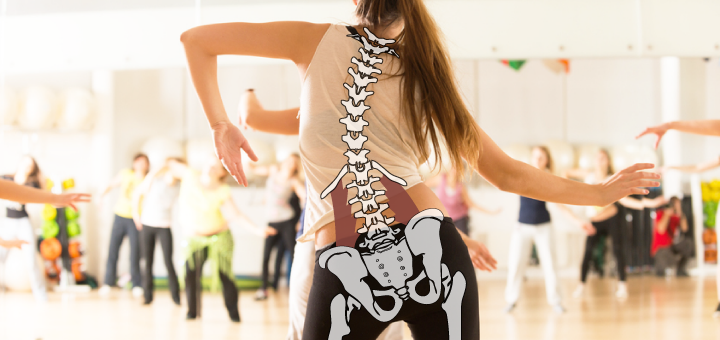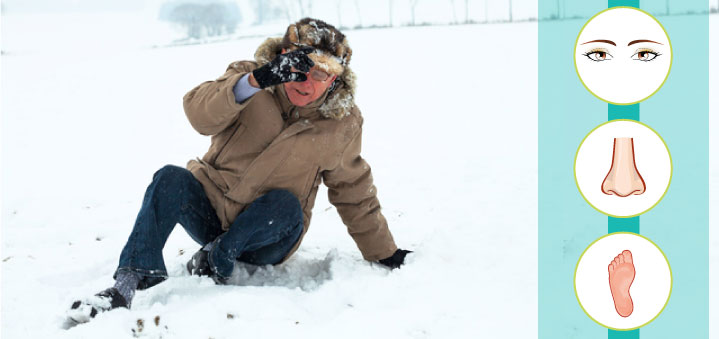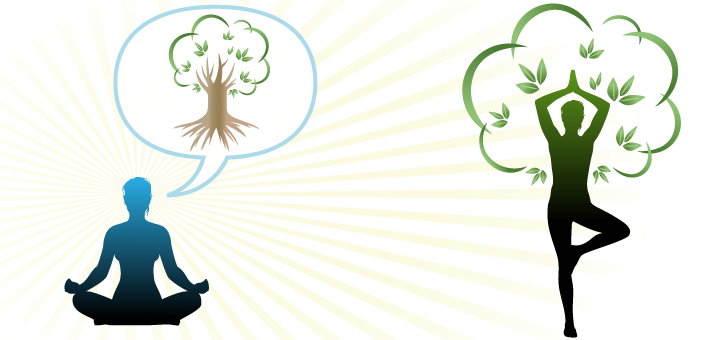How to anchor your attention in balancing poses

I cannot read in the back seat of the car when I travel – it makes me queasy. This response is pretty typical since it reflects a conflict between three main sensory inputs that inform our sense of balance. When you are riding in the car, your vestibular system (inner ear) and proprioceptive system (body pressure receptors) tell your brain that you are in motion, but your eyes are fixed on the page, so they are saying that you are still. This kind of conflict can lead to slight vertigo.
Or imagine sitting in the car and waiting for the light to turn green. If the car next to you rolls slightly forward, you will get a feeling that you are rolling backwards. Your vestibular and proprioceptive systems give you the right cues, but we tend to trust our vision more. Vision is the input that the brain relies on as most “trustworthy.” As humans we are highly visual species and the sense of vision exerts an enormous influence on how we perceive the world.
That is why fixing the gaze in balancing poses provides a visual anchor and helps all three systems (visual, vestibular, and proprioceptive) work in unison to achieve a state of balance. To test this hypothesis just close your eyes while trying to hold a Tree pose and notice how much more difficult it is to balance.
In yoga we call this drshti (or drishti), which means fixing the gaze on a stable object without straining the body or eyesight. One purpose of drshti is to help you balance in more challenging postures, but it also has another important task of focusing your attention.
The wandering eye and the wandering mind are very closely linked. Just think back to your last yoga class and how things that you saw affected your train of thought: “I wish I could bend as deep as that chick,” “That’s a cute tank top,” “I need a pedicure,” and so on. We move our eyes from one thing to another, forming opinions and passing judgments. This is the normal activity of the “vortex of the mind.” But if we intentionally focus our eyes on some external point while maintaining internal awareness, we begin to move toward a one-pointed focus.
Your point of focus doesn’t have to be external. You can “hook” your attention to anything – here are some examples of drshti moving from external to more internal:
- any sturdy object at the eye level or below (external)
- point of contact between the body and the floor (external + internal)
- part of the body (feet, legs, hands, etc) (internal-physical)
- flow of breath (internal-more subtle)
- repetition of a mantra (internal-even more subtle).
Different combinations of those work particularly well. For example, you can fix your gaze on a stable object and focus on regulating your breathing pace while chanting a simple mantra. This will help you focus the mind, and as a result, it will become easier to balance. This is a two-way street: balancing helps you focus your mind, and focusing your mind helps you balance. Both are essential for optimal daily functioning. Your ability to balance keeps you agile, strong, and confident, while a focused mind keeps you sharp, present, mentally and emotionally stable.
“According to some scientific observations, the mind can grasp only one thing at a time, passing extremely quickly from one thing to another. This gives an impression of simultaneity, and the illusion of movement as in film. A focused mind is a natural state that re-centers all energies, allowing great acuteness in observation as well as in action. This state gives optimal force to mental function, like a laser beam”. (The Essence of Yoga by Bernard Bouanchaud).

The best way to train your balance is to integrate simple balancing movements into your daily life. This short yoga practice will help you strengthen your hips and ankles while training your balance wherever you are.










I have been applying your techniques for balancing in my yoga classes which consist of people in their 50’s, 60’s, and 70’s. Prior to practicing this way, they dreaded balance poses, believed they had terrible balance, and fell in and out of the poses as we held them. Almost immediately when I explained and had them try moving within or between poses, their balance improved. Now when we do balancing, we congratulate ourselves on how much better our balance is.
Thank you for your well-presented information. I would love to take a workshop or study with you sometime!!
Great post, Olga! Thank you. Namaste
thank you for some valuable information Olga… enjoy reading your posts as I always learn a lot
M
Olga, It is extremely hard to understand how you get these articles. Mesmerising!